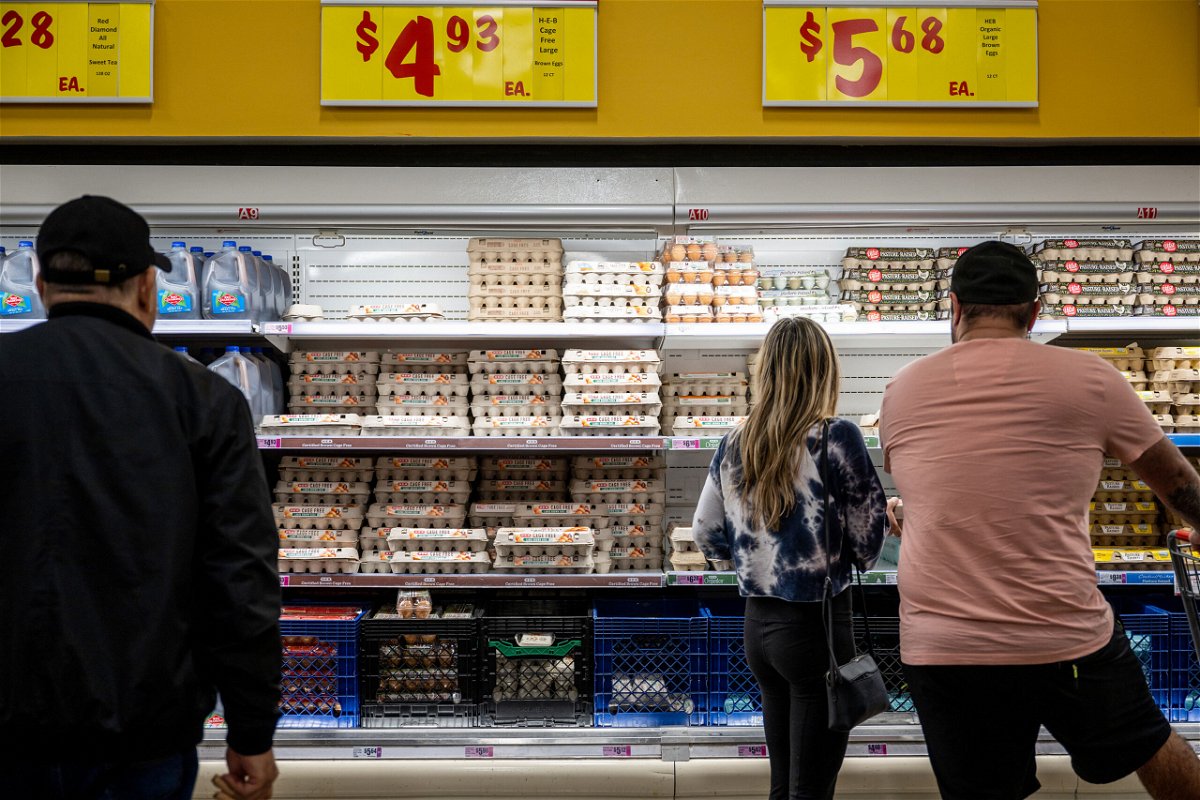Food prices ease for the first time since 2020. Here’s what’s getting cheaper

After months of dramatic increases
By Danielle Wiener-Bronner, CNN
Grocery prices finally dipped in March, falling for the first time since September 2020, according to data released Wednesday by the Bureau of Labor Statistics.
Of six major grocery food group indexes, three fell from February to March. The meats, poultry, fish and eggs index fell 1.4%, pulled down by another month of large decreases in egg prices.
Fruits and vegetable prices fell 1.3%, and dairy products ticked down 0.1%. The other indexes, for non-alcoholic beverages, cereals and bakery products and all other groceries, went up.
While the monthly decline is a relief, groceries are still expensive on an annual basis. In the year through March, grocery prices jumped 8.4%, outpacing overall inflation of 5%. Menu prices went up 8.8% in that time.
Over the course of the year, a number of grocery items notched large price increases. Eggs rose 36%, margarine went up 33.4%, flour got 17.5% pricier, potatoes went up 9.7%, cheese rose 8.2% and milk went up 5.5%.
Some prices cooled over the course of the year: Bacon fell 5.5%, uncooked beef roasts got 4.4% cheaper, and uncooked ground beef prices dipped 1.4% — though meat is still relatively expensive given how much prices soared in 2021. Fresh fruits dropped 1.5%.
Food prices are affected by factors ranging from drought and flooding to fuel prices and international events like the war in Ukraine. In addition to disrupting supply chains, these have provided cover for food companies to raise prices.
But US consumers, who have been contending with high inflation for months on end, have recently been pulling back on pricier items, flocking to low-cost retailers and trading down to store-brand or cheaper items.
It’s a huge shift: The most expensive tier of products went from 24.5% of the market in January 2019 to 9% in March in online grocery, according to research from Adobe Analytics that was previously shared with CNN. Meanwhile, the cheapest tier of online groceries grew in market share by 13 percentage points to nearly half the market, according to Adobe.
What got cheaper and more expensive in March
From February to March, adjusted for seasonal swings, eggs had the most dramatic decrease, with a 10.9% decline. Egg prices soared in previous months primarily due to avian flu, which constrained supply, and companies taking advantage of the disruption to pad profits. But more recently, egg prices have been coming down.
In the meat aisle, ham fell 4.8%, hot dogs dropped 2.9% and uncooked beef roasts fell 2.3%. Fish and seafood prices dropped 1.2%.
Butter sank 6%, with lettuce falling 5.7%. Fresh fruit and vegetables overall dipped 1.7%. Peanut butter went down by 2.3%.
Some items still got more expensive in March. Breakfast cereal got 2.4% pricier. Ice cream nudged up 1.2%, and salt, seasoning and spices went up 1.7%.
— CNN’s Matt Egan contributed to this report.
The-CNN-Wire
™ & © 2023 Cable News Network, Inc., a Warner Bros. Discovery Company. All rights reserved.
